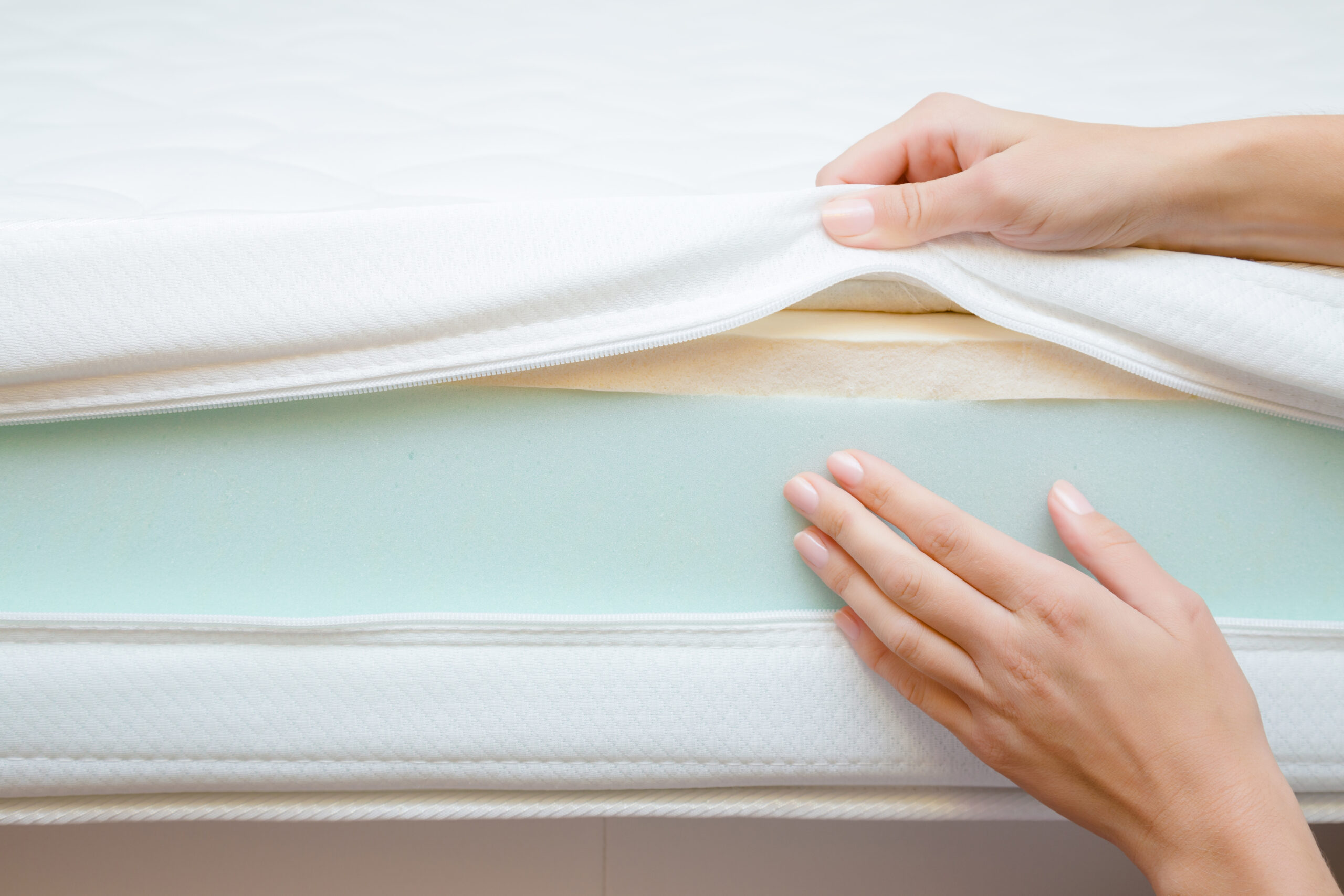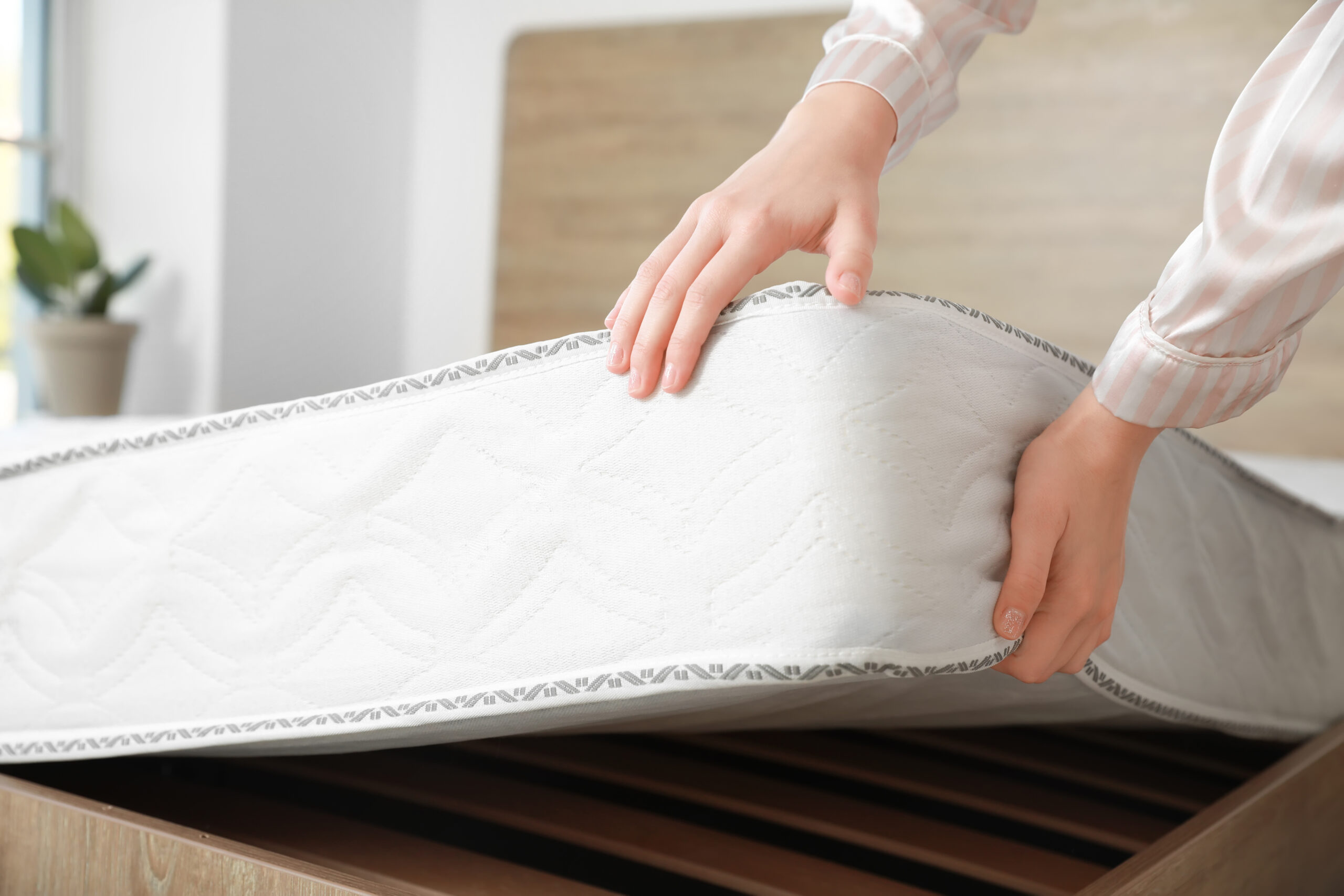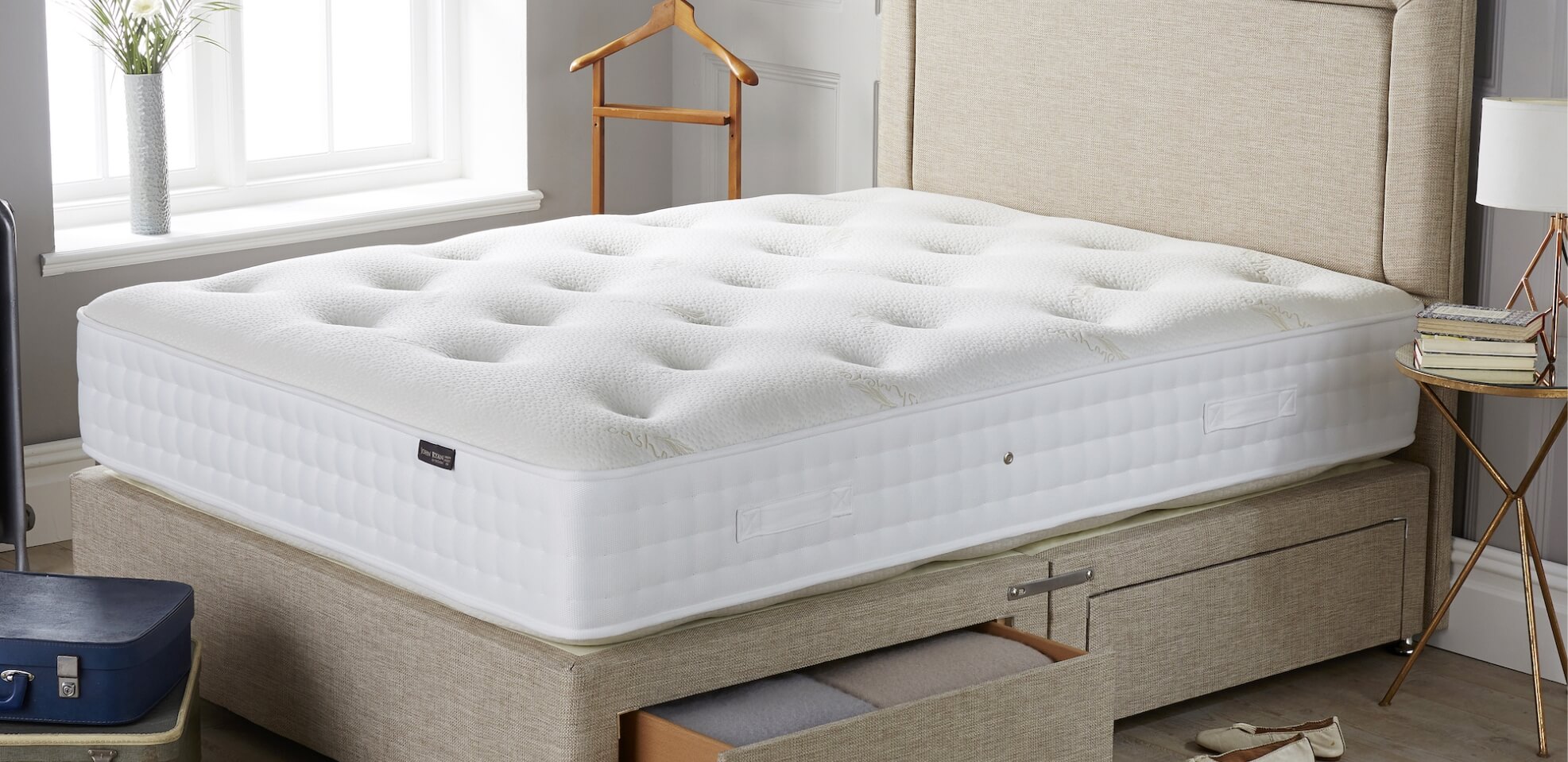A Guide to Sensaform Mattresses

As we examine the features of various Sensaform Mattresses, we’ll also suggest some of our very own John Ryan alternatives. There are numerous Sensaform mattress models, including the Airflow Memory 2000 (containing 800 pocket springs) and the Airstream Memory 9000 (housing 1850 pocket springs within 2 layers of copper-infused memory foam), but there’s actually a lot of common observations to make about these products. For the purposes of this guide, we’ll focus on the Airstream Memory 6000 and Airflow 3000.
Sensaform Airstream Memory 6000
The Sensaform Airstream Memory 6000 is a one-sided, pocket sprung mattress with copper-infused memory foam and micro-pocket springs that offers medium support. It’s marketed as providing a comfortable and supportive sleep experience.
Bensons Sensaform Airstream 6000 Specifications & Review
- Pocket sprung mattress with copper-infused memory foam and micro-pocket springs.
- Comfort Ratings: 3 – Medium Support.
- Free full 8-year guarantee.
- BSI – British Standard Kitemark™ accredited.
- A total of 1450 Active Pocket springs in two layers, for double the support.
- Dynamic perimeter support with reinforced springs for edge to edge support.
- Includes Active Micro Pocket springs for ultimate pressure relief.
- Layer of copper-infused memory foam layer for superior breathability for excellent temperature regulation.
- Luxurious deep-quilted sleeping surface for outstanding comfort.
- Easy care non-turn mattress: rotate occasionally.
- Handles on all sides to aid rotation.
- Mattress height: 32.5cm.
Straight up, we’ve noticed that Sensaform products tend towards using jargon in their descriptions. For example, the above is described as having “active springs”. What this means is that the springs in question don’t fully compress when the mattress is in use. The simple truth is that all springs should be active in this way, so it’s not really a feature! Similarly, “dynamic border perimeter” appears to just describe the perimeter support that all mattresses should have.
The presence of micro springs is also problematic. These are small pocketed springs (only about an inch in depth) in spun bonded material. They’re used to hugely increase the spring count within mattresses. In place of more upholstery layers, you can fit in literally thousands of micro springs, but you’re actually better served by the natural fillings. Micro springs are not actually made to withstand heavy loads and movements, so they fail quickly, and even before that point they can disrupt your sleep by feeling “too lively”. Calico pocket springs are much more dependable.
You’re also rarely told the tension of Sensaform pocket springs. In the case of the above 1450 pocket springs, you’re not told about the tension at all (let alone the spring wire gauge or covering type)! Because of that, it makes it really hard to judge whether the mattress will correctly support you. Spring tension should be chosen solely based on your body weight, and if your weight is not sufficient to compress the springs to the aforementioned “active state” then the mattress will be unsuitable for you. A basic rule of thumb can be seen below:
| Bodyweight | Spring tension |
|---|---|
| Upto 16 Stone / 50-101kg | Medium (1.4mm) |
| 16 Stone / 101kg Upwards | Firm (1.6mm) |
| Available in Bespoke Products (Please Call) | Soft (1.2mm) |
We then move onto the presence of memory foam. The biggest drawback with memory foam is its fast compression/sagging rating, and the fact that it retains body heat. Viscoelastic foams like memory foam and Tempurpedic foam give off and react to heat. This is what helps them to mould someone’s shape, so unfortunately we have severe reservations about their qualities of temperature regulation. One approach that Sensaform uses is to put holes in their memory foam. This is marketed as making it more “breathable”, but perforated foam still needs body heat and pressure to mould to the sleeper’s body, so we really can’t see how this makes much difference to the mattress science! Likewise, adding copper (or any other bits and bobs) to the memory foam doesn’t alter the fact that you simply can’t reduce the heat that memory foam needs without rendering it useless and unworkable.
Additionally, buyers are usually provided with no depth density or detail on the copper-infused memory foam that’s used in these mattresses. The fact is that memory foam needs to be at least 5 cm thick. It compresses fast, so anything less than this can be rendered useless after a year, sagging into an uncomfortable mess. This lack of detail therefore means that you’re flying slightly blind when looking at this mattress.
The presence of the Kitemark provides a solid selling point for a Sensaform mattress, but please do be aware that guarantees and proportional warranties in the mattress industry cause a good deal of confusion for many people. Our own guarantee is a full one; you get a total repair or refund if a John Ryan mattress fails within the guarantee period. But some other mattresses have “proportional” protection that means you’ll only get some of what you paid back if a mattress degrades after the first year. Double checking exactly what Bensons for Beds are offering is therefore recommended.
All this then leads us onto the “non-turn” (i.e. one-sided) status, and some of the issues that are associated with any such mattress.

One-sided Sensaform Mattress Issues
The one-sided mattress issue is a recurring concern that we have with memory foam and entry-level models. The construction of memory foam allows for mattresses to be made with relatively cheap materials, but materials like memory foam are not as stable as other mattress upholstery types. This is why they can only be used on one side. To use them on the other side would crush them and cause damage to the mattress. This is a problem right away, as you should aim to always be looking for a 2-sided mattress when spending £500 or more on a bed. Otherwise, you’re paying for half a mattress! Our only exception to this rule would be if the comfort layer in your mattress is latex, as it’s more responsive, breathable and durable than any other foam.
As an aside, another Sensaform model, the Viscool, adds to this issue by being a memory foam topped one-sided pillow top mattress. Pillow tops effectively utilise a permanent topper that’s fixed to the top of a mattress and, whilst they give the illusion of being sumptuously deep and upholstered, there’s a catch! The pillow top is the weakest part of the mattress, and that means any initial comfort they can boast has an extremely short shelf life. When the “pillow top” fails or collapses (which they usually do over time), you can’t remove or replace it, meaning you’ll be stuck with a lumpy topped mattress.
You can find out more about this by watching the guide below.
Sensaform Airflow Memory 3000
Another Sensaform model is the Airflow Memory 3000. It’s marketed as being a suitable choice for those who seek a comfortable and supportive sleep surface. The mattress has an airflow design that ostensibly aims to promote better circulation and temperature regulation to keep you cool and comfortable throughout the night. The pocket springs and memory foam layer offer support and pressure relief, conforming to your body shape for a customised sleep experience.
However, we have a few problems with these claims. As we’ve said, the presence of memory foam in a mattress does not suggest that you’ll get better circulation or good temperature regulation. We certainly wouldn’t recommend it for anyone who tends to get hot in bed. Many customers have also contacted us over the years to express that they have experienced back ache and hip pain after using the Sensaform Airflow Memory 3000. A possible reason for this back ache and discomfort could be the fact that the mattress is not providing the correct level of support for the individual using it. Far from offering a customised sleeping experience, it may be too firm or too soft, so it’s imperative to select the correct spring tension/feel for your body weights.
Choosing the Right Mattress
When it comes to choosing the right mattress for you, you need to consider durability, support and comfort. Different materials provide varying levels of comfort, and it’s really important to choose a mattress that feels comfortable and suits you best.
In terms of support, a good mattress should provide proper spinal alignment, helping to reduce pain and discomfort. This can be achieved through the use of different materials and construction techniques, such as the use of pocket springs and natural fibre fillings.
And finally, there’s durability! Your mattress should last for several years and withstand regular use. You shouldn’t need to sacrifice quality.
Our Alternatives to a Sensaform Mattress
Having said all that, it should come as no surprise to hear that the ideal mattress is a very personal choice. However, some things should be taken as universal advantages. For example, all of our range of pocket sprung mattresses comes with removable deep toppers that can be turned and rotated. That means that something like our Artisan Naturals will stay comfortable and supportive for longer. If you like the feel or style of Sensaform mattresses, but want something with fewer drawbacks, then some of our top alternative choices are discussed below.
Alternatives to the Sensaform Airstream Memory 6000
Fusion 3 Latex
If you prefer the firmness of the Sensaform Mattress, our Fusion 3 Latex Mattress is a great substitute. It is highly responsive and breathable, and is made with 100% latex. The core mattress provides a firm support and is fully turnable, as is the additional topper, which allows you to sink into the mattress before reaching the solid core below. It is most suited to those who like a medium to firm support for sleep.
Origins Pocket 1500
Our Origins Pocket 1500 mattress gives a true medium feel at the same price point as the Bensons Sensaform model. It does not contain heat retentive memory foam, but instead uses man-made upholstery and polyester to offer progressive comfort. It’s topped off with a wool top layer for increased breathability. It’s a two-sided model, so you’re going to get a much longer lifespan out of it by being able to use both sides of it, unlike the Sensaform Airstream Memory 6000 or the Viscool. The Origins Pocket 1500 is available in a medium or firm spring tension (depending on your body weight).
1: 300GSM WOOL
2: 750GSM VERY SOFT POLYESTER
3: 500GSM POLYESTER PAD
4: ONE INCH FOAM INSULATOR LAYER
5: 1500 SPUN BOND POCKET SPRINGS
TOTAL: 1550GSM
DEPTH: 30-33CM
| Your bodyweight | This will feel |
|---|---|
| Under 10 Stone / 63kg | Medium |
| 10-12 Stone / 63-76kg | Medium |
| 12-14 Stone / 76-88kg | Medium |
| 14-16 Stone / 88-101kg | Medium |
| 16-18 Stone / 101-114kg | Soft to Medium |
| 18 Stone / 114kg Plus | Please call for advice |
Alternatives to the Sensaform Airflow Memory 3000
Our Origins Pocket 1500, Origins Pocket Reflex 1000 or the Origins Pocket Latex 1500 mattresses work as great alternatives to the Sensaform Airflow Memory 3000:
Origins Pocket 1500 – described above, this mattress has a standard medium tension spring unit with layers of man-made upholstery that provide an overall medium feel.
Origins Pocket Reflex 1000 – this mattress has the same standard spring unit and a layer of reflex foam, providing a slightly firmer feel.
Origins Pocket Latex 1500 – once again, this mattress has the same spring unit, but accompanies it with Talalay Latex, providing a combination of springs and foam/latex.
Summary
In the end, a Sensaform Mattress will have some solid qualities that might help some people to get a good night’s sleep, but at John Ryan we want you to have the best night’s sleep! By taking the time to consider the observations above, you can find a mattress that will meet your needs and provide you with that premium quality of sleep!
If you still have questions about choosing the mattress that’s best for you, then don’t hesitate to give our small and friendly team a call on 0161 437 4419, or drop us a message and we’ll be happy to help.

Dreaming of the perfect nights sleep?

Ask us a question
There are over 6000 questions and answers submitted by you on all questions about mattresses and bed problems. Enter a keyword such as Vi Spring, John Lewis beds, bad back or Memory Foam and see if your question has already been answered.
If you can’t find an answer in knowledge hub, ask a new question. We aim to respond to all questions within one working day.
Newsletter
Enter your email to join our newsletter. We’ll send you occasional news and mattress expertise.

